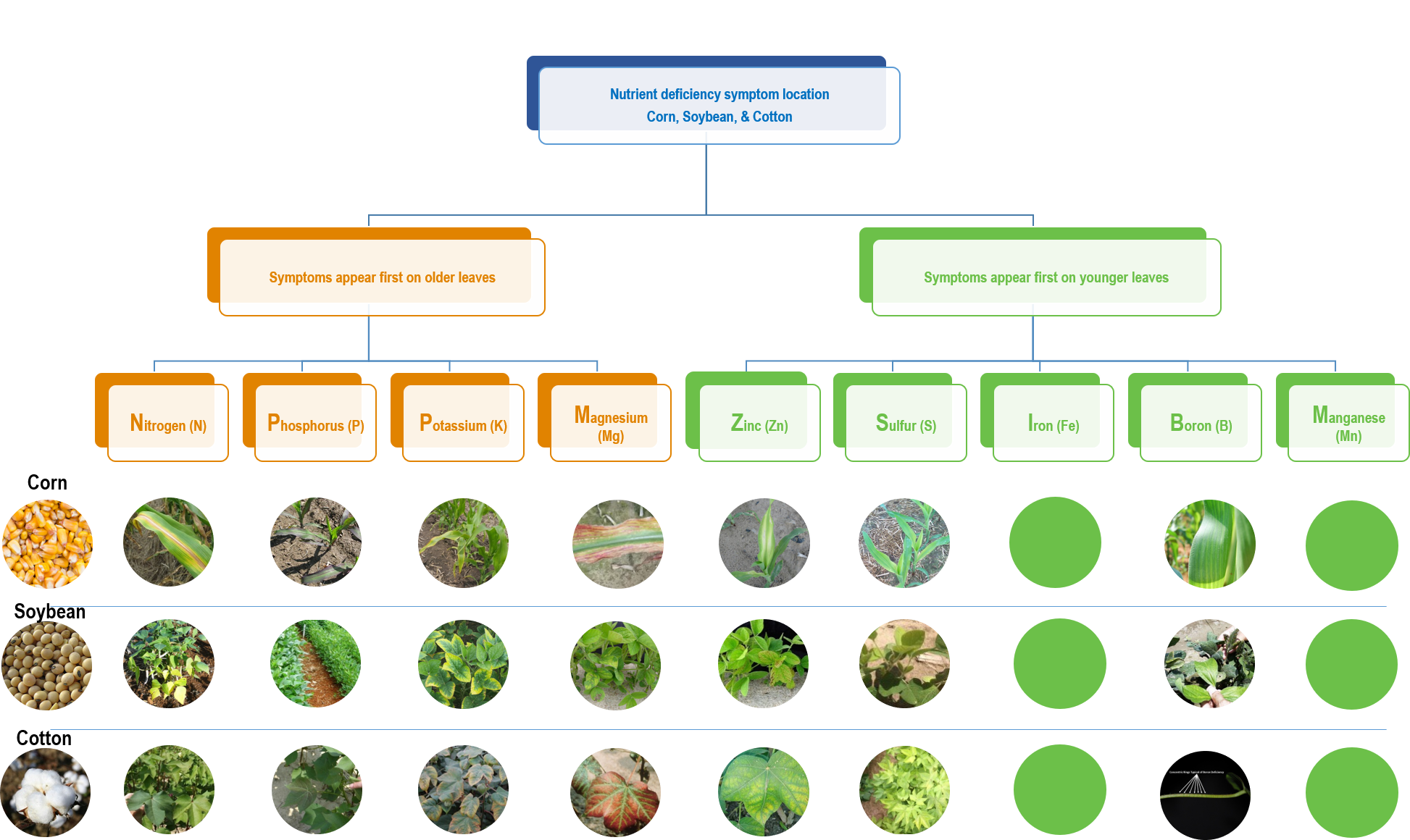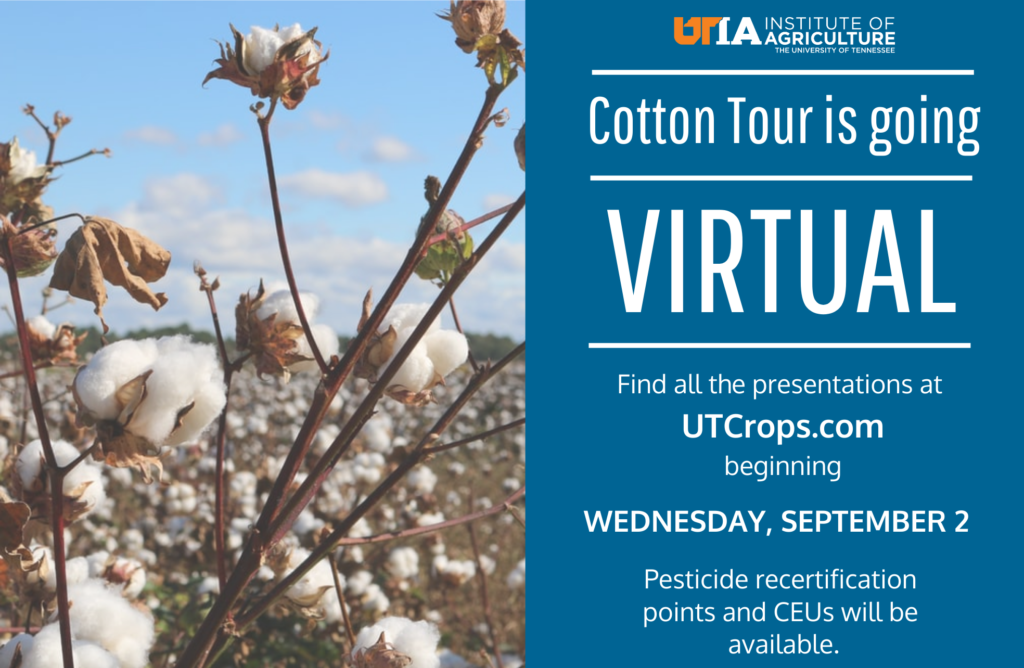 The 2020 Cotton Tour Videos are now available. Presentations covering variety performance, weed, pest and disease management, irrigation and other topics have been recorded and posted on the UT Crops YouTube channel. You can access the entire Cotton Tour by following this link. We will be highlighting individual videos in the coming weeks on this blog. Continue reading
The 2020 Cotton Tour Videos are now available. Presentations covering variety performance, weed, pest and disease management, irrigation and other topics have been recorded and posted on the UT Crops YouTube channel. You can access the entire Cotton Tour by following this link. We will be highlighting individual videos in the coming weeks on this blog. Continue reading
All posts by Tyson Raper, Cotton & Small Grains Specialist
Visual Symptoms: A Handy Tool in Identifying Nutrient Deficiency in Row Crops
Generally, a nutrient deficiency occurs as a result of low soil nutrient levels. However, prevailing environmental conditions, soil properties, and growth conditions may restrict nutrient uptake and induce deficiencies in crops even if soil nutrient levels are deemed sufficient for optimum yield. For example, low or high soil pH, soil compaction, and excessively wet or dry soil may prevent nutrient uptake. A handy diagnostic tool to identify nutrient deficiency in crops is via visual symptoms. In some instances, this tool may not provide a definite diagnosis of the nutrient status of the plant. Keep in mind that there are other conditions that are cable of inducing symptoms that closely resemble those of nutrient deficiencies. Visual symptoms should be corroborated with tissue and/or soil testing. Adequate knowledge of visual symptoms and tissue testing may help guide corrective actions in-season or preventive action in the following season to avoid yield loss.
Cotton growth stages and water requirements
While May brought a great deal of rain, June and July have been dry for much of West Tennessee. We are already beginning to see the impacts on cotton growth and development. While we still have very good cotton yield potential, we need a good soaking rain in the coming weeks. This blog highlights impacts of drought on cotton during the growth stage, provides general information on scheduling irrigation and highlights a few scheduling methods.
Ideally, the soil profile needs to provide sufficient plant available water throughout the blooming period. As we begin to move towards the permanent wilting point during the blooming window, fruit retention may begin to decline and maturity may be delayed. If a rainfall or irrigation event does not ameliorate the stress, yield penalties may develop. Cotton plants are particularly susceptible to drought during the early boll development stages which immediately follow flowering (Table 1). Keeping soil profile at or near field capacity at early bloom through peak bloom will support earliness and maximize yields.
Linking visual cotton auxin injury to yield penalties
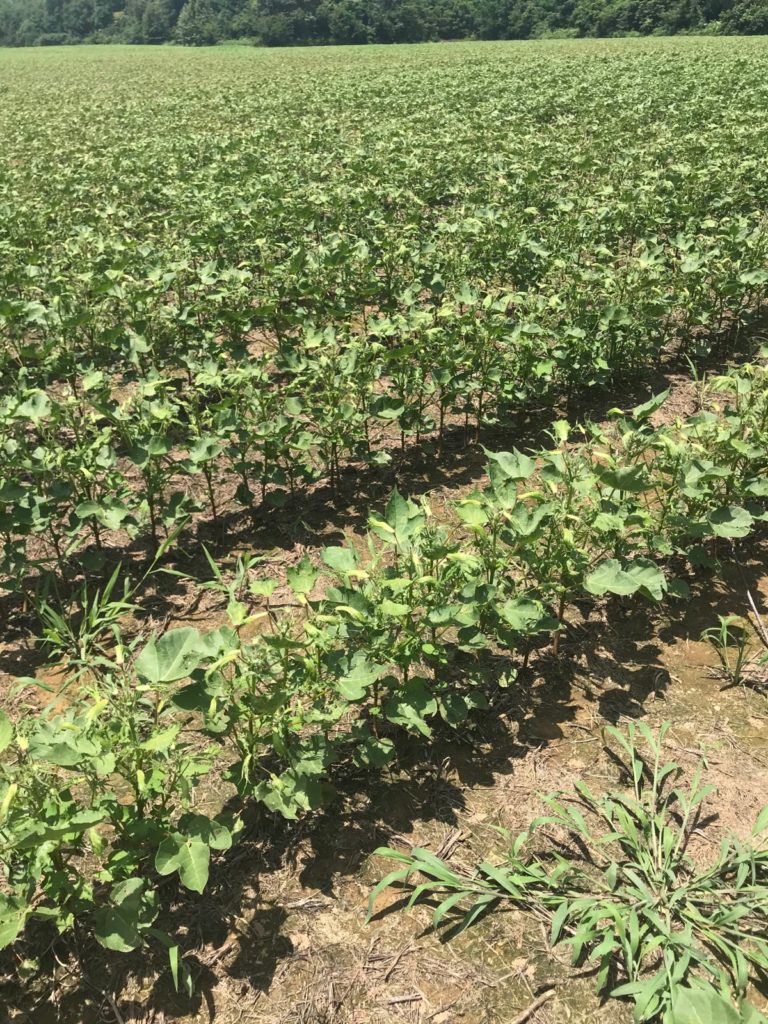 Information regarding cotton management following an off-target auxin event has been requested by several producers in our area. This blog briefly covers factors which can impact the yield penalties associated with auxin injury and best management practices after the injury occurs. Continue reading
Information regarding cotton management following an off-target auxin event has been requested by several producers in our area. This blog briefly covers factors which can impact the yield penalties associated with auxin injury and best management practices after the injury occurs. Continue reading
Cotton Producers’ Prevented Planting Decision
Christopher N. Boyer, Tyson B. Raper, and S. Aaron Smith
May 20th (Final Planting date) has come and gone and June 4th (End of Late Planting) is around the corner for cotton producers. If you haven’t planted yet and have Revenue Protection or Yield Protection insurance policies, there are four options:
- Plant cotton in the late planting period. This option comes with reduced insurance; the farmer’s production guarantee would decrease 1% per day, for each day of delay after the final planting date until the crop is planted or the end of the late planting period. Production guarantee is the guaranteed revenue amount offered by a crop insurance provider and is calculated by multiplying guaranteed insurance price by actual production history (APH) yield, which is a 4 to 10-year trend adjusted average yield used for future crop insurance purchases, by insurance coverage level.
- Take the full prevented planting payment. The full prevented planting payment is the farmer’s production guarantee multiplied by the prevented planting coverage factor. The prevented planting coverage factor for cotton is 50%. This option requires leaving the land fallow or planting a summer cover crop after the late planting period that cannot be harvested or grazed before November 1st. This option does not impact the producer’s APH.
- Receive a 35% of their full prevented planting payment for cotton and switch to a second crop. If a partial indemnity payment was received for the first crop, the second crop will be uninsured, and a farmer must wait until after the late planting period for the first crop to plant the second crop.
- Forgo the prevented planting payment for cotton and plant a second crop. If a farmer did not receive an indemnity payment for the first crop, they can switch their insurance to a second crop and plant immediately.
In this report, we examine each of these alternatives by assessing the profit-maximizing option using historical crop yield data, and also lay out information producers should consider if they are faced with a prevented planting decision. Continue reading
Cotton yield potential and planting date
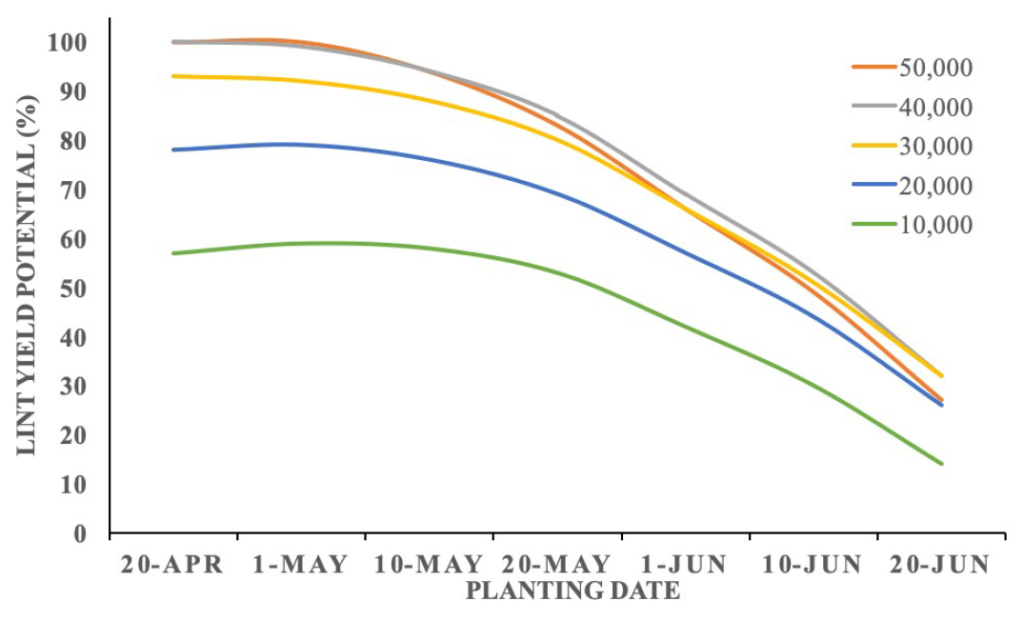
With the majority of our cotton acreage yet to be planted, many have asked how late should I plant? To answer that question, you must estimate current lint yield potential. Dr. Shawn Butler, who recently finished his PhD in the UT Cotton Agronomy Program, compiled data from 10 field trials in Tennessee, Mississippi and Missouri to assist those interested in estimating lint yield potential based on planting date and plant population (not seeding rate, but actual plants emerged per acre). The figure above was generated with that data.
Reports of freeze/frost damage to wheat becoming more common
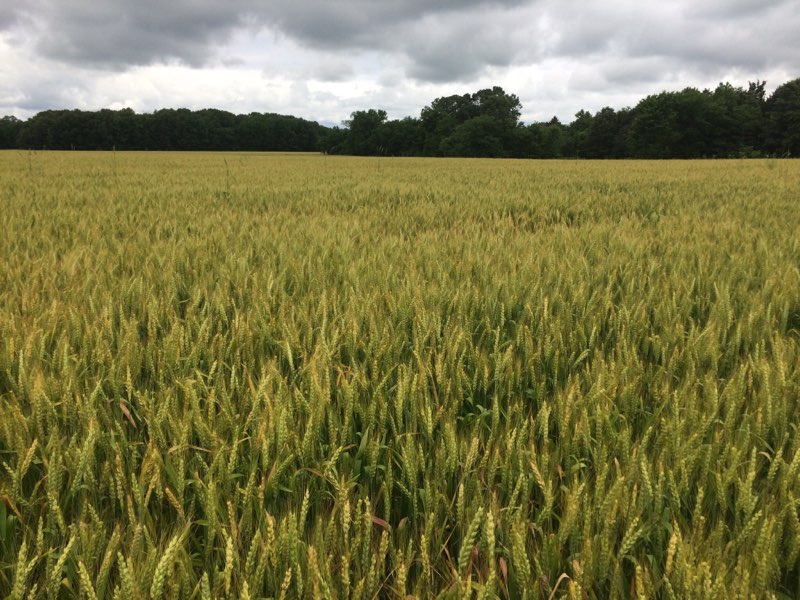 Reports of blanks in wheat heads began trickling in last week and by this week became common. The impacted areas appear to run northeast from Hardeman/Fayette Counties through Madison county and into Henry County. The injury I’ve observed has ranged from light to severe, with the worst injury appearing on acres that were planted in early October. From the windshield, the injury will likely not be noticeable; at a distance, the wheat may simply appear to be maturing rapidly (see image above). Estimated yield loss from the picture above equaled 40%. Continue reading
Reports of blanks in wheat heads began trickling in last week and by this week became common. The impacted areas appear to run northeast from Hardeman/Fayette Counties through Madison county and into Henry County. The injury I’ve observed has ranged from light to severe, with the worst injury appearing on acres that were planted in early October. From the windshield, the injury will likely not be noticeable; at a distance, the wheat may simply appear to be maturing rapidly (see image above). Estimated yield loss from the picture above equaled 40%. Continue reading
Wheat cold tolerance info after the 4/15 frost/freeze
Instead of checking the thermometer last Wednesday morning (4/15) to find temperatures at or around 32 degrees, many found temperatures as low as 28 degrees. By now (over seven days after the lowest nighttime temperature observed 4/15), we can inspect the wheat crop and get a decent estimate of what (if any) damage occurred. Before we get into damage assessments, though, I think it is appropriate to take a look at how cold it got in order to get an idea of the expected level of damage.

